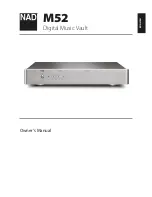
Page
84
of
133
Version 3.0 Rev r000
Date 25-08-2010
Part No. 96000001
and are used extensively by Navy and Defence forces for rapid determination of the sound velocity
without stopping the vessel.
8.5
The sound velocity cast
There are no set rules for when to take a measurement of the water column sound velocity.
Common sense is a good guideline. The conditions, detailed below, have a major influence as to
when to take a sound velocity cast.
8.5.1
Time of Day
Throughout the day the upper level sound velocity characteristic will change mainly due to solar
heating or cooling due to cloud cover or precipitation. Another main element of the time of day
changes is tides.
When working in tidally influenced areas, the sound velocity can change drastically due to a salt
wedge that moves in and out with the tide. The surveyor must be aware of the relationship of the
time of the tide to the salt wedge.
8.5.2
Fresh water influx
Any river, stream or runoff will drastically change the sound velocity through the introduction of
freshwater and also through a temperature difference.
8.5.3
Water Depth
The sound velocity cast should always be made in the deepest part of the survey area. The sound
velocity profile cannot be extrapolated to deeper depths as there are too many possible variables.
8.5.4
Distance
If the survey area is large, then it is quite possible that there will be differences across the range of
the survey area even in open water.
8.5.5
Deploying and recovering the Sound Velocity Probe
The guide lines for deploying and recovering the sound velocity probe are based on common sense,
but are sometimes ignored during the actual operation. The guidelines, below, are for a hand cast in
shallow water. The softline, used for the cast, should be marked to provide an indication of the
amount of line out.
8.5.5.1
Shallow water sound velocity cast / deployment by hand
1.
Plan where the cast is to be made.
a.
In a small area, deploy in the deepest part of the survey area.
b.
Always do a cast prior to starting the survey.
2.
Liaise with the captain or office of the watch with the plan position and time of deployment
and time required for the cast.
3.
Prepare the probe for casting (some probes may need to be programmed prior to each
launch).
4.
Secure the probe to the downline with a bowline knot or shackle.
Summary of Contents for 2022
Page 1: ...SONIC 2024 2022 BROADBAND MULTIBEAM ECHOSOUNDERS Operation Manual V3 0 Part No 96000001 ...
Page 2: ...Page 2 of 133 Version 3 0 Rev r000 Date 25 08 2010 Part No 96000001 ...
Page 92: ...Figure 78 Smooth log information copied from real time survey log ...
Page 96: ...Page 96 of 133 Version 3 0 Rev r000 Date 25 08 2010 This page intentionally left blank ...
Page 112: ...Page 112 of 133 Version 3 0 Rev r000 Date 25 08 2010 This page intentionally left blank ...
Page 116: ...Page 116 of 133 Version 3 0 Rev r000 Date 25 08 2010 This page intentionally left blank ...
Page 125: ...Page 125 of 133 Version 3 0 REV r000 Date 25 08 2010 Figure 94 Sonic 2024 Receive Module ...
















































